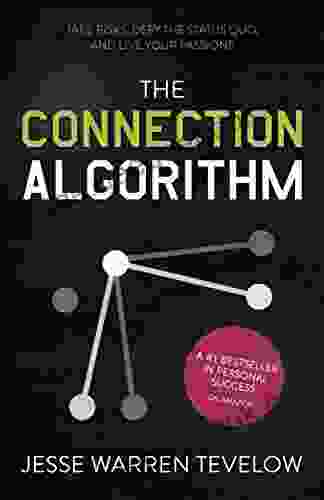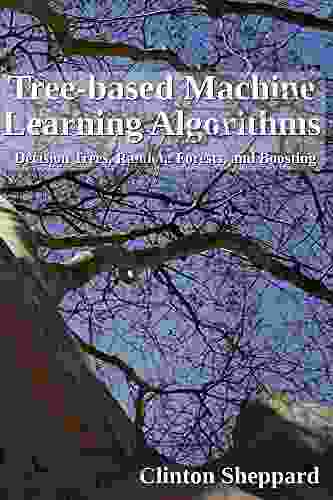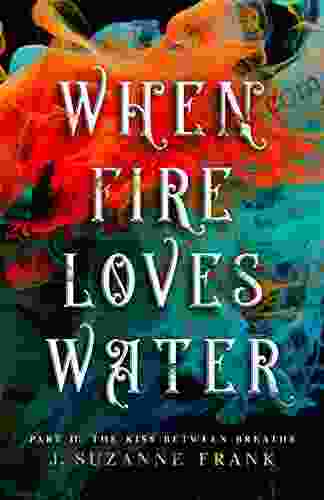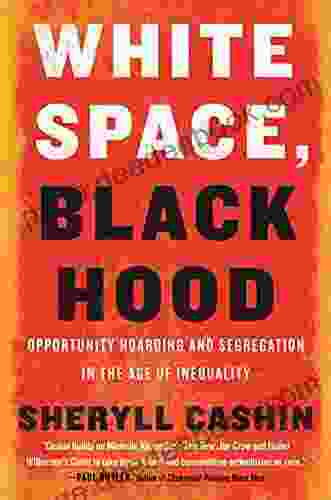Decision Trees, Random Forests, and Boosting: A Comprehensive Guide to Ensemble Learning Techniques

Ensemble learning is a powerful technique in machine learning that combines the predictions of multiple base learners to enhance the overall performance of the model. By leveraging the collective knowledge of individual learners, ensemble methods can significantly improve accuracy, robustness, and generalization ability.
4 out of 5
| Language | : | English |
| File size | : | 1243 KB |
| Text-to-Speech | : | Enabled |
| Screen Reader | : | Supported |
| Enhanced typesetting | : | Enabled |
| Print length | : | 112 pages |
| Lending | : | Enabled |
Among the most widely used ensemble learning techniques are decision trees, random forests, and boosting. These algorithms have proven their effectiveness in a wide range of applications, including classification, regression, and anomaly detection.
Decision Trees
Decision trees are a non-parametric supervised learning algorithm that builds a tree-like structure to represent the relationship between features and the target variable. The tree starts with a root node that represents the entire dataset. It then recursively splits the data into smaller subsets based on the values of the features, creating branches and leaves in the tree.
Each internal node in the decision tree represents a test on a feature, and each leaf node represents a prediction or a decision. The tree is constructed by selecting the feature that best splits the data at each node, using a metric such as information gain or Gini impurity.
Advantages of Decision Trees:
- Easy to interpret and visualize
- Can handle both categorical and continuous features
- Robust to noise and outliers
Disadvantages of Decision Trees:
- Prone to overfitting, especially on small datasets
- Can be sensitive to the order of the features
- Not suitable for high-dimensional data
Random Forests
Random forests are an ensemble learning method that combines multiple decision trees to improve the accuracy and stability of the model. It works by constructing a forest of decision trees, where each tree is trained on a different subset of the data and a random subset of features.
During prediction, each tree in the forest makes a prediction, and the final prediction is typically the majority vote for classification or the average prediction for regression. By combining the predictions of multiple trees, random forests reduce the variance and improve the generalization ability of the model.
Advantages of Random Forests:
- Improved accuracy and robustness
- Less prone to overfitting
- Can handle high-dimensional data
Disadvantages of Random Forests:
- More computationally expensive than decision trees
- Can be difficult to interpret
- Not suitable for real-time applications
Boosting
Boosting is another ensemble learning technique that combines multiple weak learners to create a strong learner. It works by iteratively training weak learners on weighted versions of the training data, where the weights are adjusted based on the performance of the previous learners.
The final prediction is a weighted sum of the predictions from the individual weak learners. Boosting algorithms, such as AdaBoost and Gradient Boosting Machines (GBM),are particularly effective for improving the accuracy of weak learners.
Advantages of Boosting:
- Can significantly improve the accuracy of weak learners
- Robust to overfitting
- Can handle high-dimensional data
Disadvantages of Boosting:
- More computationally expensive than decision trees or random forests
- Can be sensitive to the choice of weak learners
- Can be difficult to interpret
Applications of Ensemble Learning Techniques
Ensemble learning techniques have a wide range of applications in machine learning, including:
- Classification: Predicting the class label of a new data point (e.g., spam detection, image recognition)
- Regression: Predicting a continuous value (e.g., predicting house prices, stock market returns)
- Anomaly detection: Identifying data points that deviate from the normal behavior (e.g., fraud detection, network intrusion detection)
- Feature selection: Identifying the most important features for a given task
- Dimensionality reduction: Reducing the number of features in a dataset
Decision trees, random forests, and boosting are powerful ensemble learning techniques that can significantly improve the performance of predictive models. By leveraging the collective knowledge of individual learners, these methods can enhance accuracy, reduce overfitting, and handle high-dimensional data.
The choice of the most appropriate ensemble learning technique depends on the specific application and the characteristics of the data. Decision trees are a good choice for small datasets, while random forests are more suitable for large and high-dimensional datasets. Boosting algorithms can be particularly effective for improving the accuracy of weak learners.
By understanding the strengths and weaknesses of each technique and applying it appropriately, data scientists can harness the power of ensemble learning to build robust and accurate machine learning models.
4 out of 5
| Language | : | English |
| File size | : | 1243 KB |
| Text-to-Speech | : | Enabled |
| Screen Reader | : | Supported |
| Enhanced typesetting | : | Enabled |
| Print length | : | 112 pages |
| Lending | : | Enabled |
Do you want to contribute by writing guest posts on this blog?
Please contact us and send us a resume of previous articles that you have written.
 Novel
Novel Page
Page Text
Text Story
Story Reader
Reader Library
Library E-book
E-book Magazine
Magazine Paragraph
Paragraph Sentence
Sentence Bookmark
Bookmark Shelf
Shelf Foreword
Foreword Preface
Preface Synopsis
Synopsis Manuscript
Manuscript Scroll
Scroll Codex
Codex Tome
Tome Classics
Classics Library card
Library card Biography
Biography Autobiography
Autobiography Encyclopedia
Encyclopedia Dictionary
Dictionary Thesaurus
Thesaurus Narrator
Narrator Librarian
Librarian Card Catalog
Card Catalog Archives
Archives Lending
Lending Reserve
Reserve Journals
Journals Reading Room
Reading Room Rare Books
Rare Books Special Collections
Special Collections Interlibrary
Interlibrary Literacy
Literacy Awards
Awards Theory
Theory Doogie Horner
Doogie Horner Sikiru Abiodun Ganiyu
Sikiru Abiodun Ganiyu John Arnott
John Arnott Edward L Gibson
Edward L Gibson Adam Jones
Adam Jones Olivia Atwater
Olivia Atwater Thomas K Holcomb
Thomas K Holcomb Patricia Beatty
Patricia Beatty Georgette Baker
Georgette Baker Tony Scherman
Tony Scherman Hugues Duffau
Hugues Duffau Mary Lambert
Mary Lambert Brad Jones
Brad Jones Richard Brookhiser
Richard Brookhiser Victoria Sherrow
Victoria Sherrow D C Robinson
D C Robinson Sky Purington
Sky Purington Katy Pitsi
Katy Pitsi Peter Wortsman
Peter Wortsman Christina Dalcher
Christina Dalcher
Light bulbAdvertise smarter! Our strategic ad space ensures maximum exposure. Reserve your spot today!

 William FaulknerA First-Hand Account of Life on Board a Soviet Submarine in World War Two
William FaulknerA First-Hand Account of Life on Board a Soviet Submarine in World War Two Alfred RossFollow ·12.8k
Alfred RossFollow ·12.8k Dylan MitchellFollow ·18.3k
Dylan MitchellFollow ·18.3k Gilbert CoxFollow ·4.3k
Gilbert CoxFollow ·4.3k Fred FosterFollow ·7.1k
Fred FosterFollow ·7.1k Charles BukowskiFollow ·10.8k
Charles BukowskiFollow ·10.8k Francis TurnerFollow ·3.4k
Francis TurnerFollow ·3.4k Harold PowellFollow ·14.4k
Harold PowellFollow ·14.4k Amir SimmonsFollow ·4.5k
Amir SimmonsFollow ·4.5k

 Chandler Ward
Chandler WardEvery Cowgirl Loves Rodeo: A Western Adventure
Every Cowgirl...

 Dylan Mitchell
Dylan MitchellThe Connection Algorithm: Take Risks Defy The Status Quo...
In the tapestry of life, we are often...

 Terence Nelson
Terence NelsonThe Ultimate Guide to Building a Beloved Brand: Unlocking...
In today's fiercely competitive market,...

 Warren Bell
Warren BellGoverning Metropolitan Regions in the 21st Century:...
Metropolitan regions are home to a majority of...
4 out of 5
| Language | : | English |
| File size | : | 1243 KB |
| Text-to-Speech | : | Enabled |
| Screen Reader | : | Supported |
| Enhanced typesetting | : | Enabled |
| Print length | : | 112 pages |
| Lending | : | Enabled |














